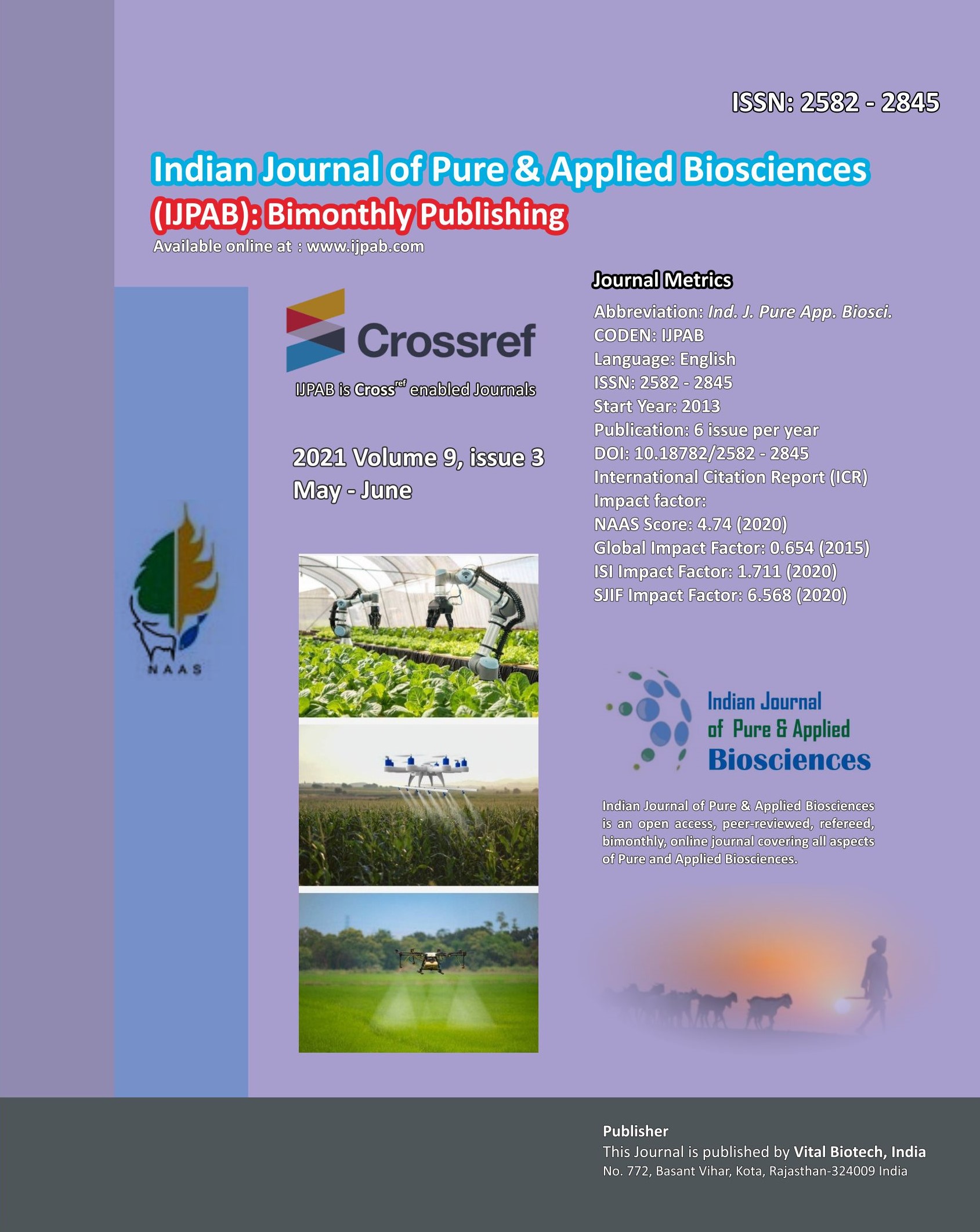-
No. 772, Basant Vihar, Kota
Rajasthan-324009 India
-
Call Us On
+91 9784677044
-
Mail Us @
editor@ijpab.com
Indian Journal of Pure & Applied Biosciences (IJPAB)
Year : 2021, Volume : 9, Issue : 3
First page : (84) Last page : (86)
Article doi: : http://dx.doi.org/10.18782/2582-2845.5761
Surgical Management of Lacerated Wound in a Buffalo
K. Manoj Kumar1*, D. Sai Bhavani2 and Makkena Sreenu3
1PhD Scholar, 2,3Post Graduate Student,
Dept. of Veterinary Surgery & Radiology, NTR College of Veterinary Science, Gannavaram, A.P., India
*Corresponding Author E-mail: manojvety12@gmail.com
Received: 9.11.2020 | Revised: 12.12.2020 | Accepted: 17.01.2021
ABSTRACT
A 4 year old Graded Murrah Buffalo was presented with extensive lacerated wound on right external ear that occurred due to horn gore injury by a bull. The animal was examined thoroughly and prepared for surgery and the wound was sutured in routine manner. Good surgical technique and effective post operative management made the case successful recovery.
Keywords: Graded Murrah buffalo, lacerated wound, external ear.
Full Text : PDF; Journal doi : http://dx.doi.org/10.18782
Cite this article: Kumar, K.M., Sai Bhavani, D., & Sreenu, M. (2021). Surgical Management of Lacerated Wound in a Buffalo, Ind. J. Pure App. Biosci. 9(3), 84-86. doi: http://dx.doi.org/10.18782/2582-2845.5761
INTRODUCTION
A wound is defined as discontinuity or separation of skin, mucous membrane, or any tissue surface. Lacerations usually occur as a result of wire cuts, kicks, horn injuries, dog bites, automobile accidents etc. (Tyagi & Singh, 1993). A lacerated wound presents torn and irregular edges (Venugopalan, 2009). With careful manipulation of wound edges of such injuries the extent of damage can be determined which play an important role to choose the best methods for its correction. The present report puts on record the surgical management of lacerated wound of right external ear in a buffalo.
Case history and observations:
A 4 year old Graded Murrah Buffalo heifer was presented to the clinic with a history of an extensive lacerated wound on right external ear that occurred due to horn gore injury by a bull. On thorough examination the lacerated wound involved skin of the right external ear. The injury was of full thickness, with serrated margins and measured 15 cm. Clotted blood was observed on wound margins with little contamination (Fig. 1).
TREATMENT AND DISCUSSION
The animal was casted in left lateral recumbency and prepared for aseptic surgery.
It was given linear infiltration with 2% Lignocaine hydrochloride along the wound margins on right ear on external aspect. The injury was irrigated with 1:1000 Potassium permanganate lotion thoroughly to remove debris and clots. To make suturing perfect the skin and sub cutis was separated by under trimming and controlling the bleeding points. Strepto penicillin powder was sprinkled on entire wound. Sub cutaneous sutures were placed using no. 2-0 chromic catgut in simple continuous pattern and skin edges were sutured in simple interrupted pattern using nylon (Fig. 2). Paste made of Zinc oxide and tincture benzoin was applied on suture line. Injection Amoxicillin+ Cloxacillin 3 g, injection Ketoprofen 2 mg/kg BW, injection Tribivet was administered intra muscularly. Wound dressing was done every day with paste of zinc oxide and tincture iodine. Sutures were removed on 10th post operative day.
In India, Bull gore injuries are frequently observed in villages. The horn of bull are long, curved directed forwards with smooth tapering ends that produces lacerations and can also penetrate the body cavities. Goring is taken when the bull horn penetrates deeply in the muscles as well as body cavities. Thus, wounds produced due to bull horn impact vary from contusions, lacerations, and penetrating wounds involving internal organs to fractures. Successful wound management is always based upon the regular follow up of the general principals of wound care. The wounds more than 6-8 hours duration are difficult to heal by first intension (Tyagi & Singh, 1993). However, the wounds in the present case were only an hour old and managed with Tenants of Halstead (Venugopalan, 2000) that resulted in first intension healing. Chromic catgut was used as it was readily available and cheaper. To prevent infection injection Amoxicillin and to alleviate pain injection Ketoprofen was administered. In this case paste made of Zinc oxide and tincture benzoin was used on first day as an anti coagulant and from next day onwards combination of zinc oxide and tincture iodine was used because of their better wound healing and antiseptic properties respectively.
CONCLUSION
The ear laceration with skin involvement due to traumatic insult can be repaired by suturing and with appropriate antibiotic therapy.
REFERENCES
Tyagi, R. P. S., & Singh, J. (1993). Ruminant Surgery. 1st Edn, CBS Publishers and Distributors, New Delhi, pp 59-63.
Venugopalan, A. (2000). Essentials of Veterinary Surgery. 8th Edn, Oxford and IBH Publishing Co. Pvt. Ltd., New Delhi, pp 9-1.


